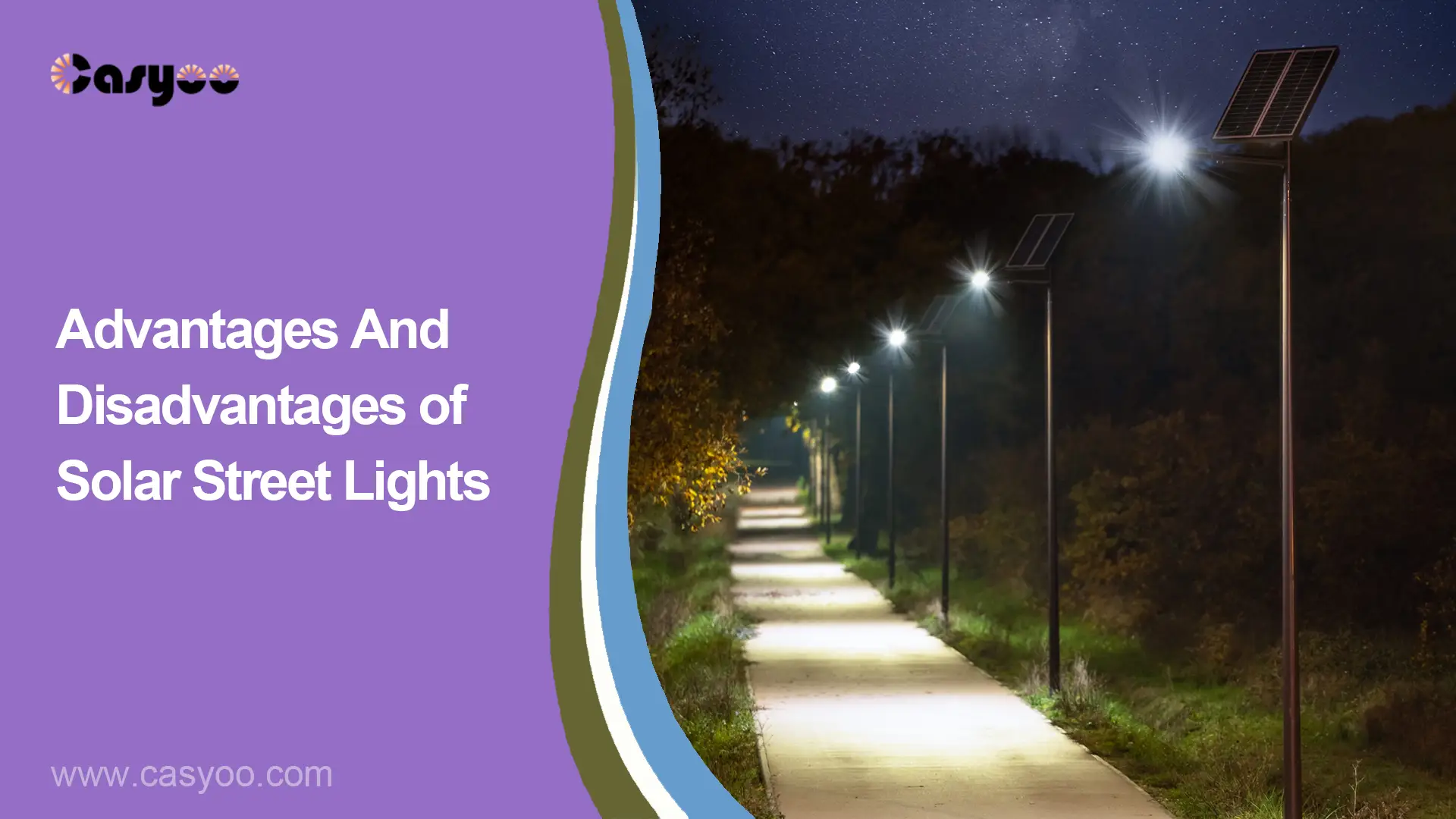Solar street lights are a product of the latest technology, designed to provide illumination in areas that the urban power system cannot reach. By utilizing clean energy, they offer potential solutions for lighting in remote locations. However, while solar street lights are brilliant, they do have certain limitations. In the following passage, you will gain a comprehensive understanding of both the advantages and disadvantages associated with solar street lights.
Advantages of solar street lights
Intelligent control
Solar street lights are equipped with intelligent control systems. They can automatically adjust lighting levels to accommodate different times of the day, ultimately reducing power consumption. Additionally, some models incorporate light, motion, and infrared sensors, enabling dynamic adjustments. This smart management technology helps create ecologically safe and sustainable lighting solutions in addition to saving electricity.
Energy-saving and environmentally friendly
By utilizing solar energy to generate electricity, solar street lights eliminate electricity costs and energy waste. Solar street lights help reduce carbon dioxide emissions by lowering their dependency on traditional energy sources.
Safety
Traditional street lights provide safety issues owing to poor construction quality, deteriorating materials, unpredictable power supply, and so on. Solar street lights operate at lower voltages compared to conventional street lights, resulting in increased safety. High voltage in AC circuits can cause fire and electric shock risks, whereas low voltage reduces these risks and equipment damage.
Low overall costs
The daily use of conventional street lights requires high electricity bills and long-term maintenance or replacement of circuits and other configurations. Maintenance costs increase year by year. With minimal electricity expenses and reduced maintenance costs, solar street lights provide long-term benefits, making them an economically sound and sustainable lighting choice. The following chart is a comparison between traditional and solar street lights.
| Item | Traditional street lights | Solar street lights |
| Average price | $1000 | $3000 |
| Digging | $700 | 0 |
| Cables | $900 | 0 |
| Pipes | $450 | 0 |
| Arranging wires | $200 | 0 |
| Filling the pit | $700 | 0 |
| Constructing the basement of the lights | $150 | $230 |
| Assembling street lamps | $250 | $300 |
| Distribution cabinet | $50 | 0 |
| Total | $4400 | $3530 |
The costs in the above table are reference values, and the specific costs quoted by manufacturers in different places will be different. However, it can be clearly seen that the comprehensive cost of solar street lights is much cheaper than that of traditional street lights. For solar street lights installed in urban areas, they have to meet higher requirements on brightness and working hours, so their costs will be higher.
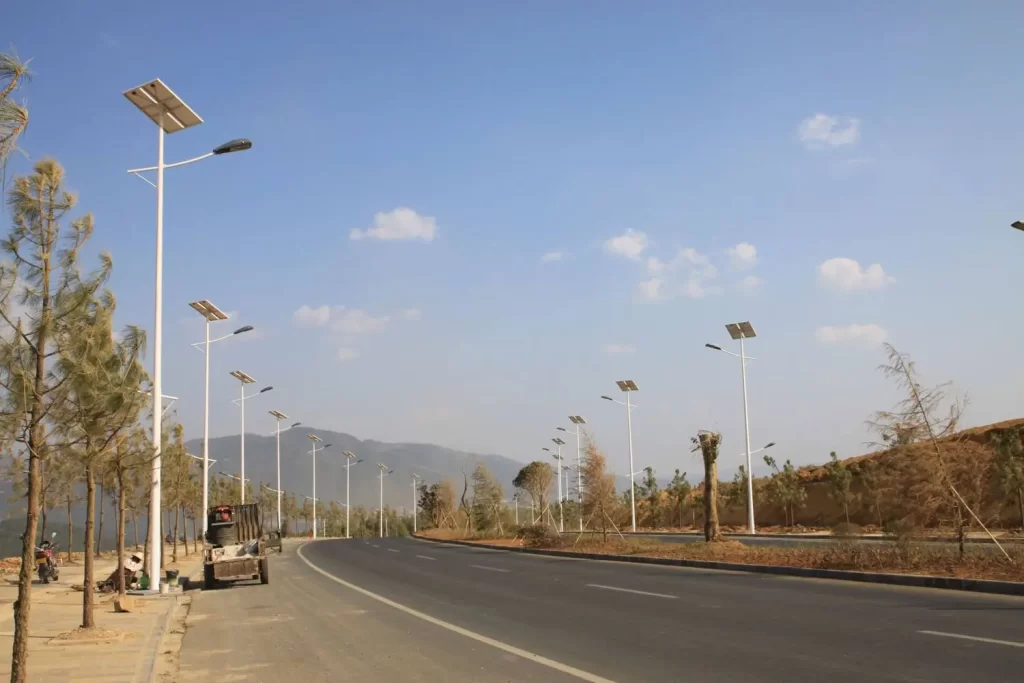
High efficiency
To save as much money as possible, solar street lights often apply the LED lights with the highest efficiency to lower the required power. The high efficiency of solar street lights is mainly reflected in two aspects:
1. Drivers: The mains power supply of traditional street lights converts AC power into DC power, while the driver of solar street lights directly supplies DC power to LED lights. The conversion efficiency of the mains power supply is 75%–90%. As for the solar street light drivers, their conversion efficiency can reach 90%–96%. The difference is more than 10 percentage points.
2. LED lamps: Many traditional street lights have a layer of tempered glass as the lamp shade, while solar street lamps apply LED modules. Without the layer of glass, solar street lights can reduce the light loss by about 20%. Besides, for the same level of brightness, traditional street lights need more power and will emit more heat, which will make their efficiency lower. For example, the overall light efficiency of ordinary die-cast traditional street lamps is about 100–120 lm/W, lower than the 160–170 lm/W of solar street lights.
Long service life
The high-quality components used in solar street lights contribute to a longer lifespan, reducing maintenance costs. By judging the life of the battery, the life of the solar street light can also be inferred. The predictability of street light life improves system stability.
Choosing high-quality solar street lights can make their lifespan even longer. If you replace the lead-acid battery with a lithium battery, the battery life can reach 10 years. High-quality lithium batteries can be used for 10–15 years, but poor-quality batteries age quickly. After installation, the brightness of the light with low-quality batteries will decrease, and the light will not light up after a few months or a year.
The overall hot-dip galvanized lamp pole will not rust for 30 years. Basically, as long as there is no external damage, it can serve for a long time. The lamp pole that has gone through cold galvanized or galvanized sheet will rust in three to four years at most, and then it will fall down.
Easy installation
Implementing conventional street lights involves complex cable laying and extensive installation and debugging, leading to higher costs. In comparison, solar street lights are simpler and cheaper to install, requiring only a cement base and pole installation. The maximum voltage of the solar street light system is 24V, so there is no risk of electric shock during the installation. Integrated solar street lights are even easier to install, saving on installation costs. No matter for all-in-one, all-in-two, or common solar street lights, the installation is simple:
- All-in-one solar street lights: They don’t need any wires, and once you turn on the switch, they can start working.
- All in two solar street lights: There is a pair of matching plugs on the cable; connect them to make the lights start working.
- Common solar street lights: There are two cables with matching plugs. You can first connect the lamp and then the solar panel.
Wide applicability
It can be installed in remote mountainous areas, islands, and other areas without power grid coverage. In areas where power is tight, grid outages and power cuts will not affect these lights. In this way, they can also reduce the burden on the grid.
Choose solar lights from Casyoo and enjoy the long-term economical benefits they bring!
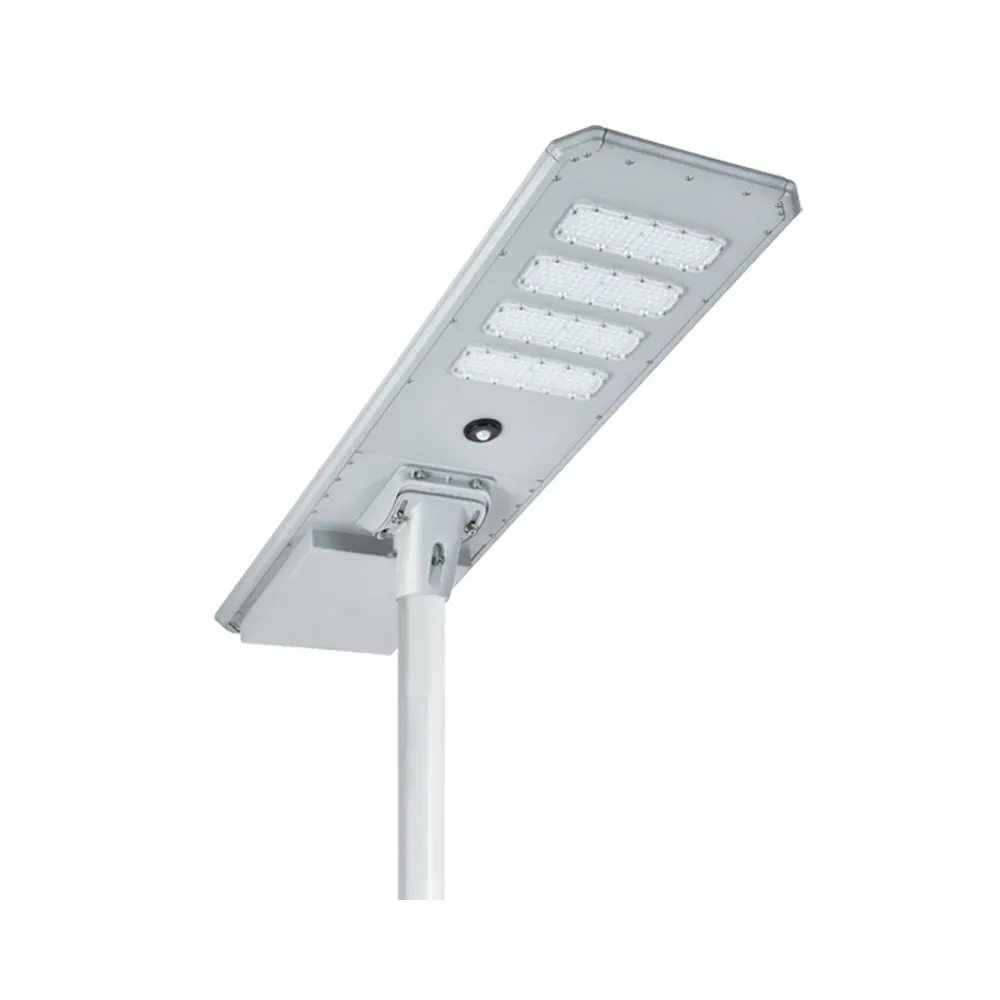
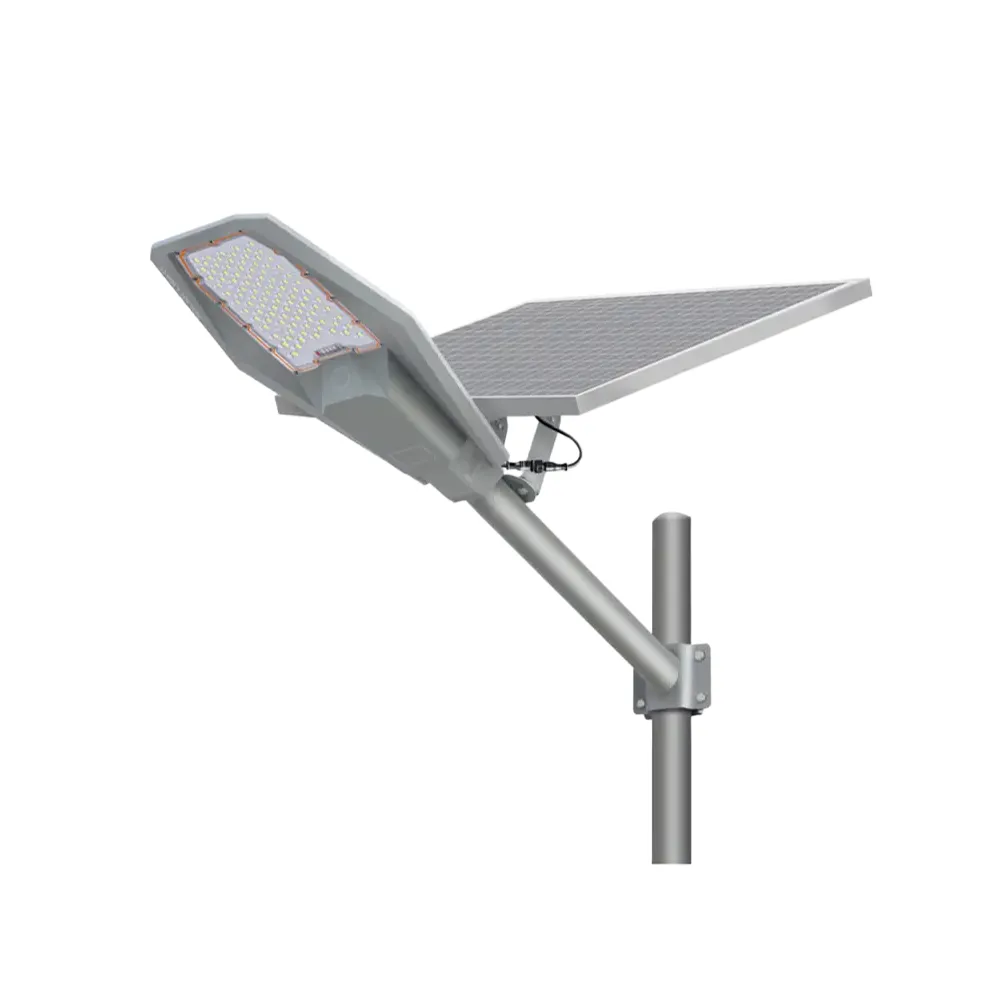
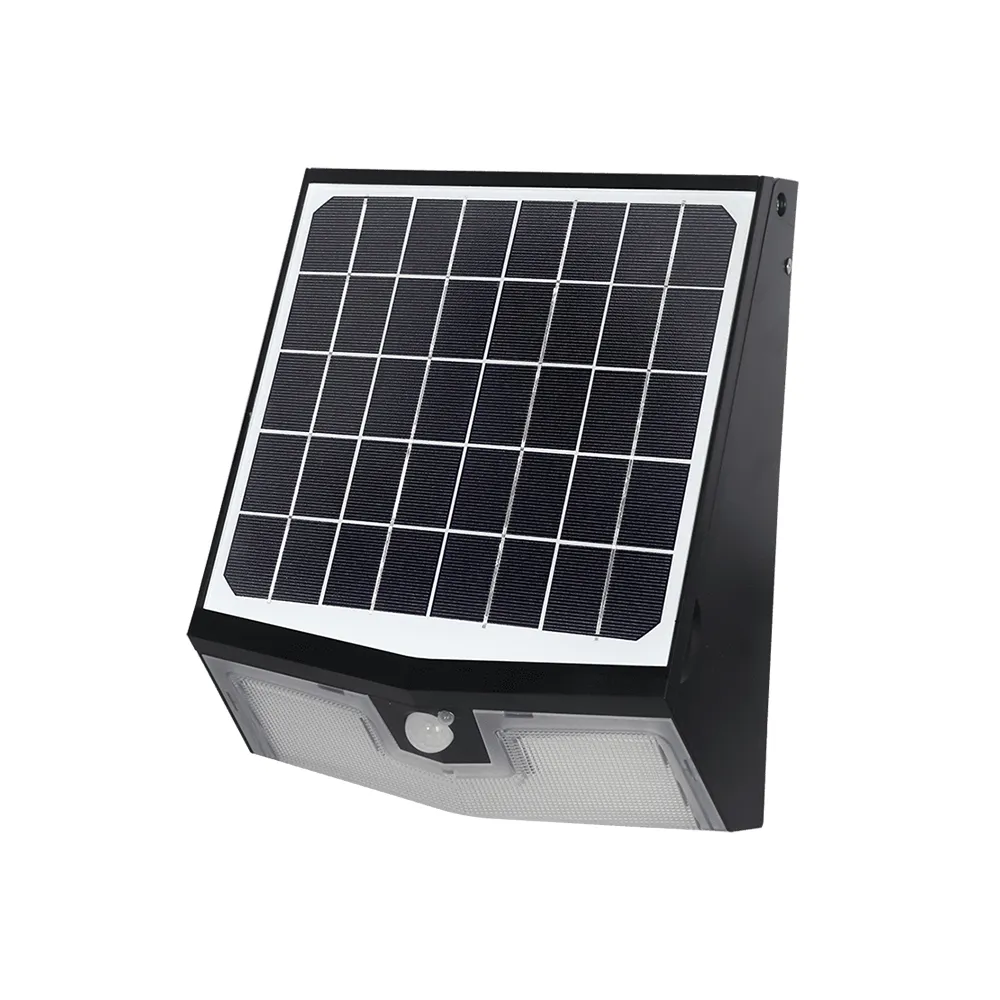
Disadvantages of solar street lights
Not bright enough
Many users find their solar street lights not bright enough. There are many reasons for this:
- false labeling, which misleads the users to buy lights with false power.
- The power of the solar street light is low. In order to reduce the price of the whole lamp, the actual power of the solar street light is relatively low. Users need to find professional manufacturers and set a reasonable budget so that they can buy solar street lights that provide sufficient light.
- Some solar street lights are set at maximum brightness only during certain periods. This measure is also to reduce the price of the whole lamp, but you can ask for higher brightness at other times, and reliable manufacturers can change the system design to meet your needs.
High initial investment
The upfront cost of solar street lights is often 3–4 times higher than that of traditional street lights. This initial cost might be a deterrent to widespread adoption, particularly in budget-constrained contexts.
Low efficiency of energy conversion
Solar photovoltaic cells have a conversion efficiency ranging from 15% to 19%. Silicon solar cells can theoretically achieve a conversion efficiency of 25%. The effectiveness could be decreased after installation, though, if nearby structures obstruct the panel.
Geographical and climatic reliance
Solar street lights are greatly reliant on geographical and climatic conditions. Their performance may not be satisfying during cloudy days and shorter durations of lighting at night. High temperatures can also reduce the efficiency of batteries and panels, while low temperatures reduce battery capacity.
Low-cost performance and service life of components
High battery and controller prices, coupled with the need for regular battery replacements and the relatively short service life of controllers, contribute to higher operating costs. Component durability and service life thus present a significant challenge in terms of system reliability and long-term cost-effectiveness.
Hot spot effect
Because the design of solar panels makes it difficult to dissipate heat, when a failure occurs on the solar panel, heat in localized areas can build up across the entire panel, causing the hot spot effect. Solar street light panels may suffer from this problem, leading to a reduced lifespan.
Difficult centralized management
Since the solar street light system does not require the laying of wires and cables, each set of solar street lights is an independent system, so centralized management and remote monitoring of the street light system cannot be achieved.
Heat dissipation problem
At present, solar street light systems usually have low power and are suitable for outdoor use at night. The heat dissipation surface is located on the side, which is suitable for the natural convection of air for heat dissipation. However, many lamp head designs enclose the chip in the housing, negatively affecting heat dissipation.
Conclusions
Although solar street lights excel in areas such as ease of installation, reduced electricity costs, and improved safety compared to traditional street lights, they come with a higher price and potential operational challenges. Therefore, prospective buyers considering the implementation of solar street lights for their projects should carefully weigh the factors outlined above before making any decisions. Tell us about your project and let us analyse if solar lights are the best option or not.
